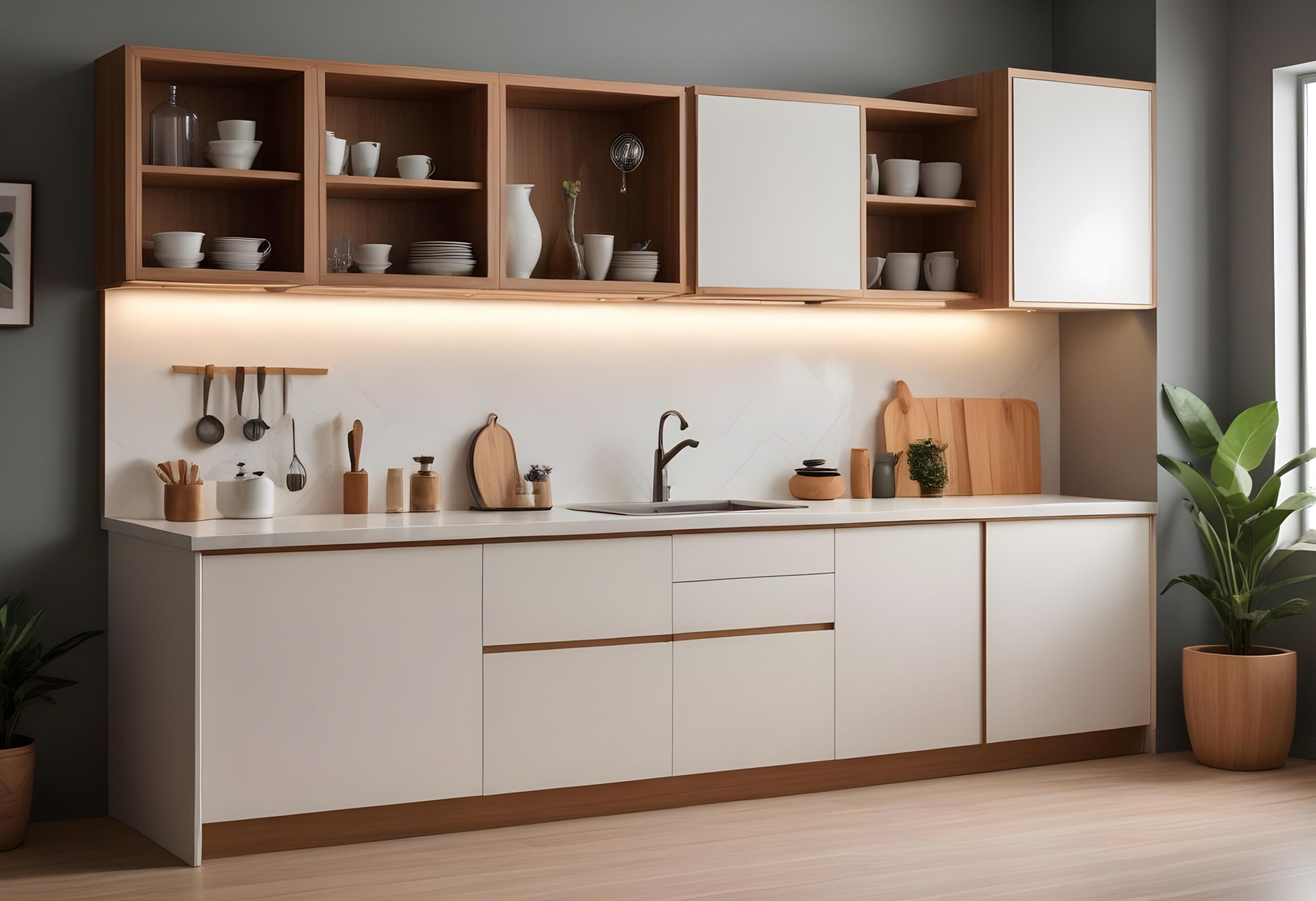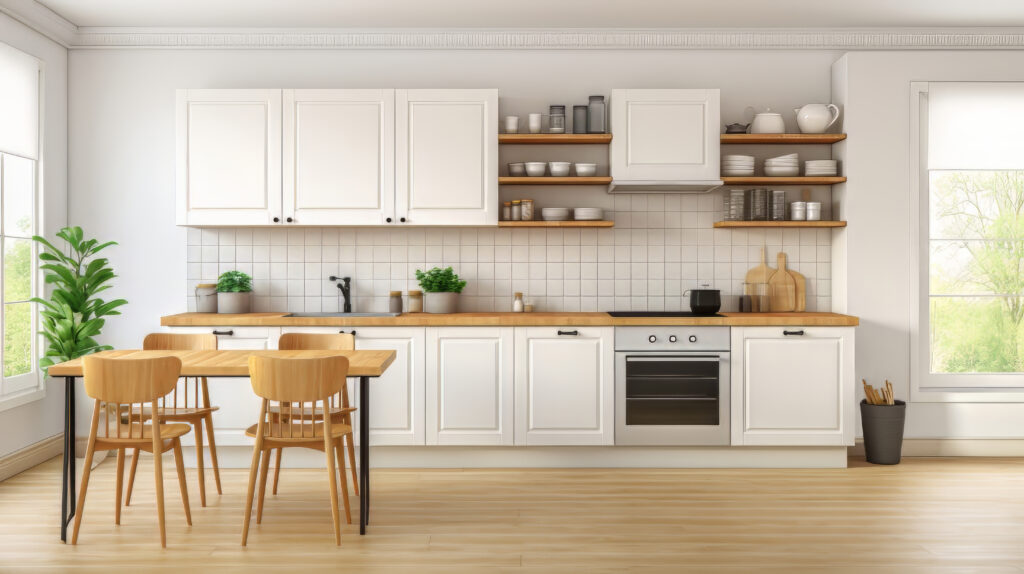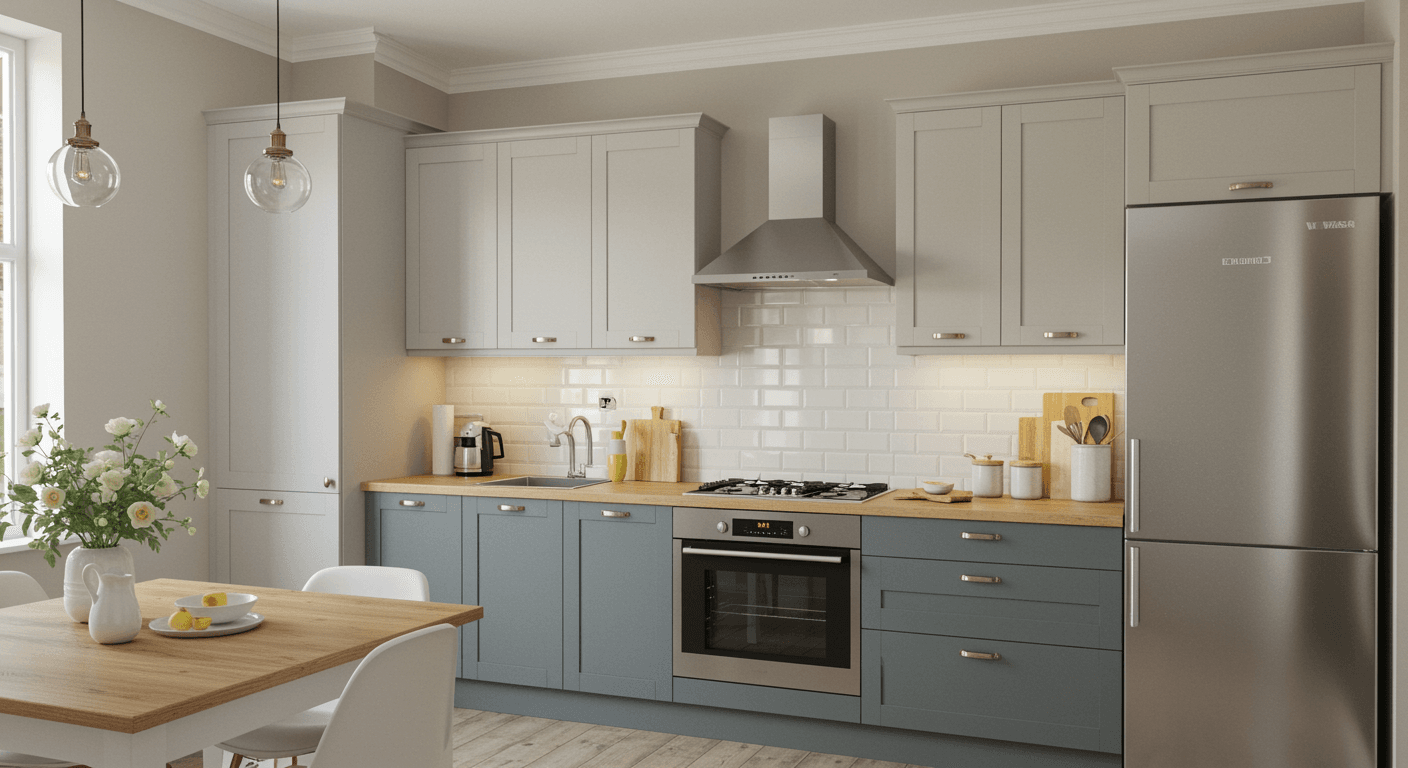Installing cabinets in your home space may be an exciting aspect that home owners could be looking forward to. However, there are certain do's and don'ts that home owners should be aware of when installing new cabinets. Here are 4 important aspects that should be taken into consideration.
Dos
Installing Cabinets #1: Getting Accurate Measurements

When installing cabinets, accurate measurements are important when it comes to creating a well put together and professional look. Start by carefully measuring the dimensions of your room. This includes the height, width and depth of the space of the area where these cabinets are to be installed.
Measuring the walls and floors within the space is an important step because all home are different from one another and have irregularities such as uneven floors and walls — creating some form of difference from one another. These aspects must be taken into account during installation to avoid any sort of structural issues, gaps and errors. Also, measure the location of existing appliances, windows, doors and plumbing or electrical outlets to ensure that everything will look neat and seamless while not becoming a hazard in the space. Accurate measurements also help determine the correct size and number of cabinets that are perfect to be installed.
@ampquartz Not your typical kitchen design tips! Want more tips for your house? You know what to do! Follow and repost! 𝙍𝙚𝙖𝙘𝙝 𝙪𝙨! 📞 +6017 732 0149 (Jasmine) +6010 707 7815 (Lekha) https://go.wa.link/ampquartz 𝗩𝗶𝘀𝗶𝘁 𝗼𝘂𝗿 𝘀𝗵𝗼𝘄𝗿𝗼𝗼𝗺!🚪 Address: https://waze.com/ul/hw23bfh9s4 82, Jalan Gaya 1, Taman Gaya, Ulu Tiram, 81800 Johor Bahru 𝗩𝗶𝘀𝗶𝘁 𝗼𝘂𝗿 𝘄𝗲𝗯𝘀𝗶𝘁𝗲! https://www.ampquartz.com/ #EuropeanStyleKitchenCabinet #EuropeanStyleCabinet #EuropeanStyleInspo #EuropeanStyleDesign #CastleGreyKitchenCabinet #GreyKitchenCabinet #solidplywoodcabinet #SolidPlywoodKitchenCabinet #SOlidPlywoodKitchen #kitcheninspo #kitchencounters #kitchendesign #KitchenCabinets #KitchenCountertops #KabinetDapurJohor #KabinetDapurJB #KabinetDapurUluTiram #KitchenCabinetJohor #AMPQUARTZ
♬ original sound – armin arshe
Before cutting a piece of material or making a hole in a wall, double-check all measurements as this can prevent any unnecessary expenditure due to errors. Small mistakes can lead to big problems such as installing the wrong cabinet size and shape; thus, requiring expensive replacements. Use proper measuring tools such as a tape measure and levellers are important to ensure stability. When planning to install custom cabinets, providing the right dimensions to the manufacturer is essential to getting cabinets that fit the room well. Paying attention to detail during measurement can save time and money by preventing errors that require additional labour or material costs due to errors.
Taking the time to measure the space correctly will ensure smooth installation and allow the cabinets to blend seamlessly into the desired space — maximising functionality and aesthetics within the area.
Installing Cabinets #2: Considering Make And Material Of Cabinets

When installing a cabinet, the choice of materials is an important factor that affects both functionality and efficiency. The materials that you have set out to choose should not only match the aesthetic that you desire but also works well in the space available. For example, if you live in a humid area, plywood is more resistant to moisture which then reduces the risk of warping or swelling. Solid wood, while beautiful and durable, can be expensive and can contract or expand with changes in temperature. Plywood, on the other hand is a durable option that home owners can opt for as it offers excellent performance and resistance to wear and tear.
Another thing to consider is BWR plywood, which is treated to be resistant water — making it suitable for hot or humid areas where cooking takes place. In addition, materials such as laminate can provide a beautiful and simple surface which is ideal for kitchen environments. However, they are not necessarily as durable as wood or plywood.
Also, home owners should consider maintenance and care works as some materials require special care to up keep their appearance and integrity. For example, wood based materials may require regular maintenance while laminated options require slightly less maintenance. Ultimately, choosing the right cabinet is about balancing beauty, durability and functionality. Choosing the right materials will help ensure that your cabinets are durable and beautiful for years to come — providing visual and functional support for the needs of your kitchen.
Don'ts
Installing Cabinets #1: Ignoring The Layout Of The Space

One major mistakes home owners can make when installing cabinets is to overlook all aspects about the space layout. Thoughtful and thorough planning is the basis for successful development as it ensures that all elements are able to work together perfectly. Skipping this step or getting into the cabinets without considering the layout of the space can cause more harm than good — not only makes the kitchen lose its charm, but also makes it a less efficient space overall.
Without a floor plan, you can end up congested spaces that also have limited areas for movement while also creating blockages towards important parts of the space such as windows, doors or even kitchen appliances. A floor plan allows home owners to determine where each cabinet is to be installed — ensuring that there is necessary space and room for doors, drawers and appliances and to make the kitchen work seamlessly.
This helps prevent issues such as doors slamming or not closing and opening properly, which can be serious problems especially when used daily. It can also help you see the flow of your kitchen, make sure your work area is well planned and that key areas such as the sink, oven and refrigerator remain as productive spots within the kitchen.
@ampquartz Dapur kecik pun boleh nampak luas kalau korang ikut steps ni. So lepasni tak perlu dah risau pasal ruang sempit! Btw kalau nak beli kabient buat dengan kami tau, ada promo kaw kaw wei! 𝐁𝐨𝐨𝐤 𝐜𝐮𝐬𝐭𝐨𝐦 𝐜𝐚𝐛𝐢𝐧𝐞𝐭 𝐣𝐨𝐦! 📞 +6017 732 0149 (Jasmine) +6010 707 7815 (Lekha) https://go.wa.link/ampquartz 📍𝐉𝐨𝐦 𝐭𝐞𝐧𝐠𝐨𝐤 𝐬𝐡𝐨𝐰𝐫𝐨𝐨𝐦 𝐤𝐢𝐭𝐚! Alamat: https://waze.com/ul/hw23bfh9s4 82, Jalan Gaya 1, Taman Gaya, Ulu Tiram, 81800 Johor Bahru 💻𝐓𝐞𝐧𝐠𝐨𝐤 𝐣𝐨𝐛 𝐬𝐢𝐭𝐞𝐬 𝐤𝐚𝐦𝐢: https://www.ampquartz.com/ #kitchendesign #kitchendesigntips #kitchendesigner #kitchencabinets #kitchenhack
♬ Forever Young – Alphaville
Layout planning can also help identify potential problems that may need to be addressed, such as bad spots or uneven corners. It also allows you to prepare in advance for any electrical outlets, light switches or plumbing that may be affected by the placement of the cabinets. Ignoring this important step can lead to costly mistakes that will require a redo of the installation — adding time and money to the project. Finally, taking the time to carefully plan your installation is the key to a functional, beautiful and trouble-free cabinet set up.
Installing Cabinets #2: Rushing Through The Installation Process

The installation process of cabinets, when rushed through, can cause many problems such as compromising on the quality and finish of the work. When you are in a hurry to install cabinets, many mistakes can be made such as incorrect measurements, misalignment and possibly structural issues. These defects can result in crooked or poorly mounted cabinets, uneven gaps and other issues that can disrupt the flow of the kitchen.
For example, if the cabinets are installed quickly, they may not for a great fit — portraying bad alignment and affecting the appearance of the space overall. In addition, rushing the process often means that important steps such as securing the cabinet to the wall or adequate support are not carried out properly, resulting in damage and compromising the durability of the overall set up. Improper installation due to rushing or a time crunch can lead to costly repairs and replacements in the future.
@ampquartz Pantang kan nampak benda trend ni? Mesti ikut nak buat sekali. TAPIII jangan sampai memakan diri nanti! Selalu lah rajin research dulu sebelum reno dapur, okay? Pening ke tu? Takpe kita ada cabinet consultant yang boleh tolong! 𝙅𝙤𝙢 𝙗𝙪𝙖𝙩 𝙘𝙖𝙗𝙞𝙣𝙚𝙩𝙨 𝙙𝙚𝙣𝙜𝙖𝙣 𝘼𝙢𝙥𝙌𝙪𝙖𝙧𝙩𝙯! +6017 732 0149 (Jasmine) +6010 707 7815 (Lekha) https://go.wa.link/ampquartz 𝙆𝙞𝙩𝙤𝙧𝙖𝙣𝙜 𝙖𝙙𝙖 𝙎𝙃𝙊𝙒𝙍𝙊𝙊𝙈🚪 Address: https://waze.com/ul/hw23bfh9s4 82, Jalan Gaya 1, Taman Gaya, Ulu Tiram, 81800 Johor Bahru 𝗩𝗶𝘀𝗶𝘁 𝗼𝘂𝗿 𝘄𝗲𝗯𝘀𝗶𝘁𝗲! https://www.ampquartz.com/ #solidplywoodcabinet #aluminiumcabinets #kitcheninspo #kitchencounters #kitchendesign #KitchenCabinets #KitchenCountertops #KabinetDapurJohor #KabinetDapurJB #KabinetDapurUluTiram #KitchenCabinetJohor #AMPQUARTZ
♬ love maybe nightcore – kpop speed up songs
Attention to detail is important because every step of the process — from measurement and balance to safety and flexibility as this greatly affects the look and quality of the final product. Taking the time to properly plan, measure and perform each step of the installation ensures that the cabinet is installed correctly and performs to its best capacity. Finally, while speed may seem like it depicts more efficiency, there are times where it often leads to more delays and issues at a later stage. Following through the process based on the proper timeline is the best way to ensure quality.





